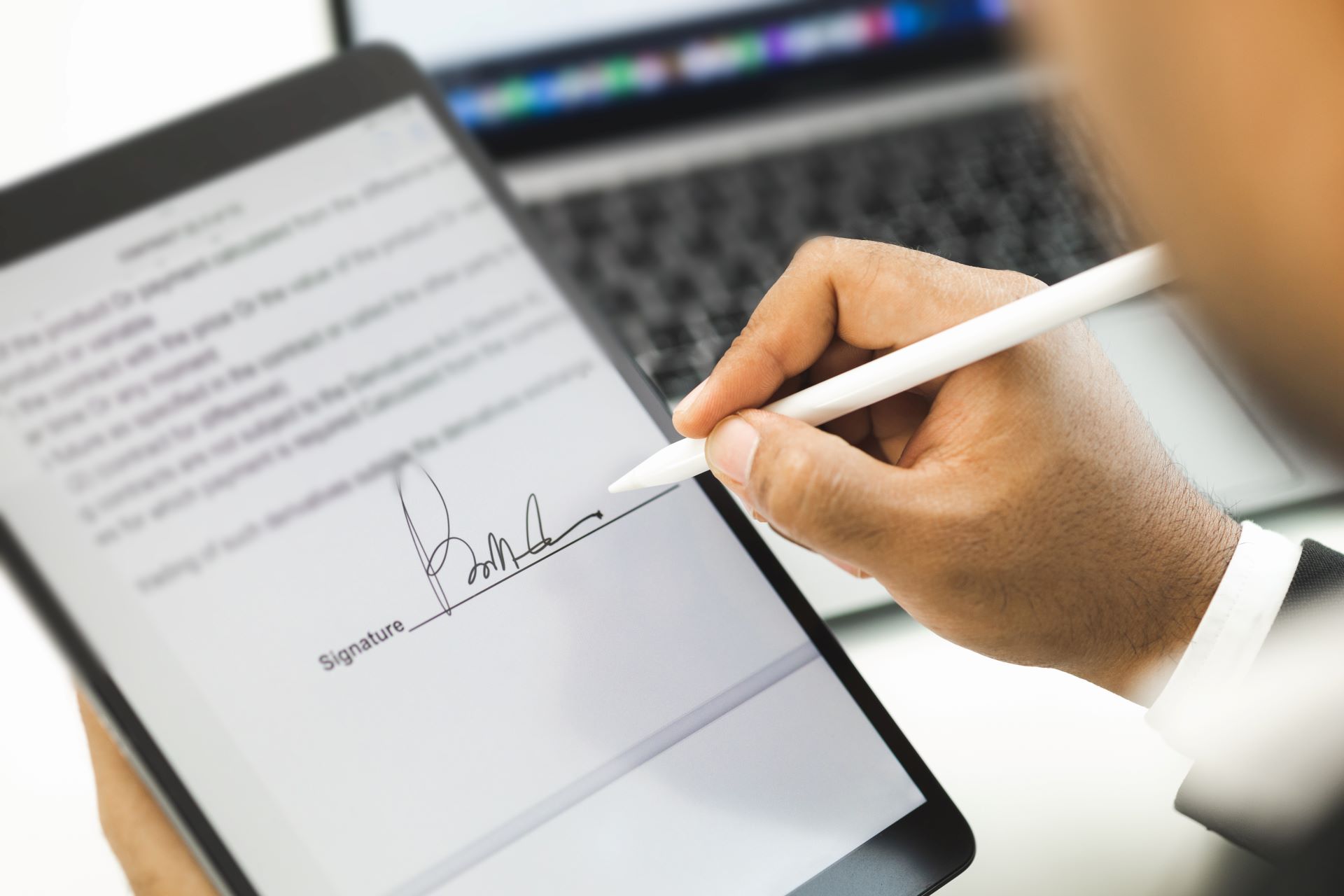
Electronic signatures have been around for a while now. The first laws regarding the legality of eSignatures in the United States, for example, were being drafted as far back as 1999.
Across the world, eSignature legality was largely established as a recognized and enforceable element of agreements between businesses and individuals—as well as between government agencies and other legal entities—between the years 2000 and 2002.
In the meantime, those laws have been updated and refined. In New Zealand, for example, the Electronic Transaction Act 2002 established legal guidelines for eSignatures but the Contract and Commercial Law Act 2017 further codified when eSignatures would be considered valid and what kinds of documents still require a wet ink signature to be considered legally enforceable.
So what do you need to know in order to ensure that your eSignatures meet legal requirements for the nations in which your organization operates?
We can’t dive into electronic signature legality without covering just what eSignatures are. After all, the law is, essentially, a series of definitions applied to objects and actions—so in order to understand the legality of something, we must define what that thing is.
An eSignature is anything that electronically represents a person’s acceptance of the terms of a document. There is no one way that an eSignature looks. It can be written with a finger on a touchscreen, typed out after confirming the signatory’s identity, or even a check box.
The key is that it is used in the same way a wet ink signature would be used on a paper document. It is the object that confirms that what is written on a document has been accepted.
Of course, eSignatures do not exist in a vacuum. They are often accompanied by the use of some means of confirming a digital signature. And contrary to some people’s belief, digital signatures and eSignatures are not the same thing.
Your digital signature is, essentially, the proof that you are who you say you are. Digital signatures are a key part of eSignature legality because they assure the other party in a contract that the signatory is the person who is required to sign.
A digital signature can be protected by encryption, multi-point identity confirmations, biometrics, and more. In some cases, a person’s digital signature may even be tied to a specific IP address, but that is less common now that enabling signatures from mobile devices and remote locations is a higher priority for many organizations.
With an understanding of eSignatures and digital signatures, the framework for legal electronic signature acceptance becomes more apparent. In short, an eSignature that has been paired with some degree of digital signature confirmation is legally recognized and binding.
It is in the details, though, that we can see what is needed from an eSignature solution in order for it to be legal across state and even national borders. There are five general criteria that must be filled in order for eSignatures to be legally recognized.
All parties involved in a contract or other important document must intend to sign that document. This is the same for an eSignature as it is for a wet ink signature. If you sign a document that is presented to you as something other than it is, the terms of that document cannot be enforced.
This requirement protects the signatory from any person or organization that may take an eSignature and attach it to an unrelated document, for example.
Everyone involved in a document which utilizes eSignature technology must consent to that usage. This can be tied to a signatory’s digital signature. If you have confirmation of a person’s identity and they click a box that says that they consent to the use of an electronic signature—you are in legal compliance.
You just have to be sure that the organization presenting the document and the person or people signing that document all recognize and accept eSignature legality.
In order to ensure the legality of signatures on digital documents, the people signing must be associated with that document. This is another aspect of the legality of eSignatures, which is the same as wet ink.
Essentially, this means that there must be confirmation of the identity of the person signing. This can be handled with a few steps to ensure a signatory’s digital signature.
This is another aspect of eSignature legality that has close ties to the laws surrounding traditional, analog documents. You must be able to confirm that the signature matches that of the signatory.
With a hard copy, a signature can be compared to past signatures or to examples provided on a person’s identification. But when you aren’t in the room with someone, you can’t check their driver’s license. Digital signature protocols ensure that the person signing electronically is who they say they are.
Finally, with any legal digital signature process and eSignature application, each party involved in a contract or document must have access to that document. With eSignature solutions, completed paperwork can be automatically filed in an organization’s secure cloud storage—available to be searched up in seconds whenever that document is needed.
With eSignature software such as Dropbox Sign, you can integrate your signing solution into your enterprise document management system, allowing internal and external signatories permissioned access to the relevant documents and contracts that they have signed electronically and allowing each party to make PDF copies of their paperwork for their records.

Generally speaking, if your eSignature solution can cover those five bases, that signature will be legally recognized and enforceable just about anywhere in the world. That said, there are some differences, depending on the nation in which you are doing business.
eSignatures in the United States are governed on a federal level by the Electronic Signatures in Global and National Commerce Act, or the ESIGN Act. Each state also has their own set of laws regarding eSignatures, but those were mostly written using the same framework—called the Uniform Electronic Transactions Act.
These laws have been in effect for over twenty years and are fairly straightforward.
Over in Oceania, Australia and New Zealand have each built their own framework for eSignature legality. As previously mentioned, New Zealand updated its eSignature laws to the Contract and Commercial Law Act 2017.
Meanwhile, Australia has the Electronic Transactions Act 1999 to give a federal framework for the question of “are digital signatures legal?” Both New Zealand and Australia follow similar guidelines for eSignature recognition as the USA regarding intent, consent, attribution, and so on.
Interestingly, Australia made some legal changes to allow certain documents that require special witnesses to be witnessed remotely—for example, via a video conference call. Other nations made similar changes during the COVID-19 pandemic, but unlike Australia, most countries reverted back to requiring in-person witnesses.
While the United Kingdom is no longer a part of the European Union, they still share very similar laws regarding eSignatures. Though, interestingly, the UK’s Electronic Signatures Regulations Act of 2002 predates the EU’s eIDAS regulation by several years.
Both the UK and EU have a classification system for eSignature legality. Each class of signature has more security and use of digital signature confirmation than the last. Those signature classes are Standard Electronic Signatures (SES), Advanced Electronic Signatures (AES), and Qualified Electronic Signatures (QES).
In most cases under both legal frameworks, an SES is all you need. For court documents and important leases among other similar use cases, AES and QES requirements for recognition have been put in place.
It should be noted that eSignatures are not acceptable for certain documents. For the most part, these exceptions to eSignature legality will not come up in the day to day business of your organization—unless your business is a law firm.
Agreements for adoption or divorce, marriage certificates, wills, and trusts make up the majority of these legal exceptions. Termination of insurance benefits will often require wet ink signatures, as well.
The guidelines for what makes a legally recognized eSignature are largely the same throughout much of the world. By implementing an eSignature solution that integrates with your security protocols and permissions, you will be able to ensure that your electronically signed documents will be nice and legal.
Say you want the functionality and ease of implementation with enterprise document systems provided by software like Dropbox Sign. The experts at TEAM IM can work with you to deliver the benefits to efficiency and legal coverage afforded by electronic signatures.
eSignature legality has a decades long history throughout much of the world. It’s time you took advantage of this technology. Whether your organization is in the public sector or your company is a private entity, it can benefit from the right eSignature solution.
Reach out to TEAM IM today to take your organization to the next level via the power of eSignatures.
These Stories on esignature
1453 Helmo Ave N
Oakdale, MN 55128
L2, 1 Post Office Square
Wellington 6011
119 Willoughby Road
Crows Nest NSW 2065
No Comments Yet
Let us know what you think